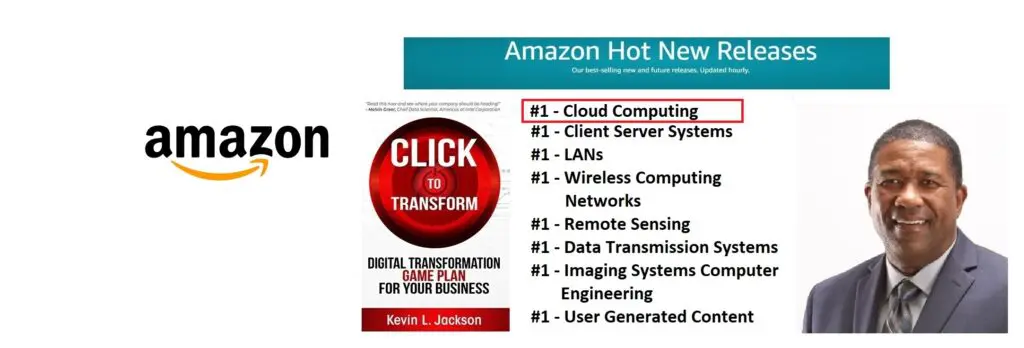Twitter Feed
2018 AT&T Business Summit: Security “in” and “of” the Cloud
While public cloud is undoubtedly an outsized piece of the conversation, news headlines of the latest data breach can make this move a very frightening proposition. The question of how…
My Brush with Royalty: Queen Latifah
Queen Latifah! Hip Hop Icon. Movie Star. Television Star. Fashion Model. Songwriter. Producer. Entrepreneurial Genius!? YES! Dana Elaine Owens, her given name, is co-owner of Flavor Unit Entertainment, a firm that includes…
What’s New in Puppet 5?
Puppet 5 is released and comes with several exciting enhancements and features that promise to make configuration management much more streamlined. This article will take a comprehensive look at these…
5 Reasons Why Ansible is the Best CM Tool Out There?
Amidst volatile markets, dynamic technology shifts, and ever-increasing customer demands, it is imperative for IT organizations to develop flexible, scalable and high-quality applications that exceed expectations and enhance productivity. A…
Machine learning APIs for Google Cloud Platform
Google Cloud Platform (GCP) is considered to be one of the Big 3 cloud platforms among Microsoft Azure and AWS. GCP is widely used cloud solutions supporting AI capabilities to design and…
What Is The Most Important Part of Architecture?
I always find it interesting to hear what people view architecture as. A lot of people think it’s just about the design aspect, where you get to put pen to…
Cloud migration best practice Part 4: Executing the migration
This series has stepped through cloud migration best practices. After providing an overview, we discussed: Classifying business-critical data. Updating organizational IT governance policies. Application screening and cloud workload selection. How to…
Cloud Migration Best Practice Part 3: Application Portfolio Analysis
In part three of this series on cloud migration best practice, I will focus on migrating the application itself. If you haven’t had the opportunity to read our recommendations from part…
Why Use Immutable Storage?
Data has become a global currency, and its value has nowhere to go but up. According to The Economist online, the world’s most valuable resource is no longer oil, but…
CLOUD ACT: What Does That Mean for Your Cloud Storage
When Congress names a law after you, it’s getting serious. That is where we are now with cloud computing. The Clarifying Lawful Overseas Use of Data Act or CLOUD Act (H.R. 4943) is…
A survey of 2,000 executives conducted by Cognizant in 2016 identified the top five ways digital transformations generate value:
- Accelerating speed to market
- Strengthening competitive positioning
- Boosting revenue growth
- Raising employee productivity
- Expanding the ability to acquire, engage, and retain customers
Digital transformation is also a cultural change.
Cloud Computing as Digital Transformation
Since cloud computing is now a widely used operating model for virtually all organizations in every industry, cloud computing for digital transformation is now an essential element to every organization’s future. This transition minimizes the amount of financial capital needed to affect a given business model while simultaneously enabling customer service delivery models that guarantee a determinate amount of income for a specified operational expense. It reduces the traditional technology usage model (a selection, acquisition, operation, and maintenance of information technologies process) and increases the use of the technology services consumption model (evaluation, consumption, reevaluation, and selective replacement process). Collectively referred to as hybrid IT, all these resource options transform the customer experience, internal operational processes, and the targeted business models.
Three Significant Market Sectors
Cloud computing, also known as information technology-as-a-service (ITaaS), was quickly adopted by many businesses and organizations because of its ability to deliver value in three significant market sectors: Infrastructure-as-a-service (IaaS), Platform-as-a-service (PaaS), and Software-as-a-service (SaaS). These models, known collectively as cloud computing service models, deliver dramatic improvements in cost control, flexibility, speed to market, reliability, and resilience—all of which are vital cloud computing adoption drivers.
Consumption models differ from traditional IT acquisition models wherein a specific technology is purchased, owned, and operated by the customer.
IaaS
In infrastructure-as-a-service, fundamental computing resources (i.e., compute, storage, and network services) are provided to a customer who can install and run any application onto a specified operating system.
Management of the cloud infrastructure remains the responsibility of the service provider, but the customer has control over operating systems, storage, applications, and possibly limited control of select networking components.
The emergence of cloud changes this traditional view of infrastructure’s role with commoditization and enabling service consumption through an on-demand, pay-as-you-go model.
The IaaS service model depends on a large scale and the significantly high degree of automation needed to support significant internal user workloads or those across multiple cloud deployments.
PaaS
When consuming platform-as-a-service, the end customer is operating in an integrated development environment (IDE) provisioned and maintained by the cloud service provider. In this service model, customer-created or acquired applications can be deployed onto the cloud infrastructure.
Recently, significant strides and efforts have been taken to ensure that open-source stacks are both supported and utilized, thus reducing lock-in, which can be described as an inability to stop consuming services from a specific CSP due to economic, operational, or similar reasons. Open-source software stacks can also help avoid interoperability issues if the enterprise changes CSPs. The ability to support a wide range of underlying hosting environments for the platform is also a key PaaS benefit. While a requirement to code to specific APIs was enforced by cloud service providers, developers were able to run applications in multiple environments. This approach is the model employed when the consumer uses the provider’s applications running on a cloud infrastructure.
Commercialization of the Internet
Offering or consuming cloud computing services both economically and profitably across a broad marketplace, however, involves much more than just technology changes.
The commercialization of the internet resulted in the following:
- Development and near ubiquity of easy-to-use, visually attractive computing devices
- The rapid growth of globally interconnected wide-area networks
- Abandonment of then widely used, tightly coupled client-server business applications in favor of loosely coupled application architectures
- The disappearance of thick client software interfaces and the broad adoption of thin-client browsers (these foundational technical changes were blended with a standards-based and highly automated operational approach)
- Operational and policy adaptations that explicitly recognize IT service consumption characteristics align the organization’s internal processes with key cloud computing characteristics
5 Essential Characteristics of Cloud Computing
Coined by the United States National Institute of Standards and Technology (NIST), there are five “essential characteristics of cloud computing.â€
These characteristics succinctly describe the technical, operational, and economic aspects of this revolutionary approach to information technology:
- On-demand self-service
- Broad network access
- Resource pooling
- Rapid elasticity
- Measured service
On-demand self-service enables the provisioning of cloud resources on demand, whenever and wherever they are required. From a security viewpoint, this has introduced challenges to governing the use and provisioning of cloud-based services, which often violate organizational policies.
Resource pooling, the third essential characteristic, addresses the improved resource utilization rates cloud computing can deliver.
Cloud Computing Deployment Models
With cloud computing, resources are grouped in pools for use across all customer groups, which is referred to as multitenancy. Avoiding multitenancy and resource pooling violates the cloud computing economic model resulting in operational cost that generally exceeds that of a traditional datacenter.
A key benefit exploited by many organizations is the ability to charge departments or business units for their use of services.
There are four generally accepted cloud computing deployment models:
- Private cloud refers to a proprietary environment (network or data center) owned and architected for use by a specified entity that uses a cloud computing approach to provide services behind a firewall.
- Public cloud is a publicly available service, generally over the Internet, in which a customer can access cloud service provider resources as a free service or offered on a pay-per-usage model.
- Multiple organizations share a community cloud environment under a joint governance structure. This model gives many of the public cloud benefits while providing heightened levels of privacy, security, and regulatory compliance.
- A hybrid cloud is formed by combining any of the other deployment models, typically public and private cloud.
Private Cloud
The private cloud deployment model is normally for the exclusive use of the owning organization, its employees, and the designated business ecosystem.
When using a private cloud, the organization enjoys increased control over data, underlying systems, and applications.
Private clouds have become more popular among large organizations with legacy systems, customized environments, and when significant technology investments have already been made.
Public Cloud
A public cloud may be owned, managed, and operated by a business, academic, or government organization, or some combination of them.
Public cloud providers typically have the scalability to meet customer needs, and customers benefit financially because they pay only for what they consume.
Hybrid Cloud
Don’t confuse “hybrid cloud†with “hybrid IT.†The latter term refers to the use of cloud infrastructure in combination with management services or traditional data centers.
Components of this broader IT implementation mix are the following:
- Traditional data centers, where the organization pays for the total cost of ownership of all the hardware and software.
- Managed service provider, where the organization pays a third party to provide IT hardware, software, and professional services.
- Cloud computing, where the cloud service provider (CSP) pays for ownership of all hardware and software, and the CSP pays the salaries and benefits for all operational staff.
This form of business model is disruptive to traditional goods and services because of the zero cost and instant economics of digital information goods in today’s pervasive digital network environment.
The digital nature of platform economics can be leveraged to design, develop, and deliver new products, services, and capabilities as well.
Organizations that successfully embed platform economics into their digitally transformed business models and processes can establish market differentiation through innovation.
Business models that take advantage of platform economics include freemium offers where customers receive a basic level of service for free, then are charged for extra function or capacity on top of the base price. (Examples of such freemium services include Dropbox and Evernote.)
By executing a platform economics business model on a cloud computing platform, organizations can capture revenue before consuming any IT services. All of this, however, requires operational and policy adaptations which explicitly recognize IT service consumption characteristics that align the organization’s internal processes with key cloud computing characteristics.
Ready to dive deeper into cloud computing and digital transformation? Pre-order your copy of my forthcoming book, Click to Transform!
Article generated by AI in cooperation with Leaders Press based on Kevin Jackson’s Click to Transform.

Cloud Computing
- CPUcoin Expands CPU/GPU Power Sharing with Cudo Ventures Enterprise Network Partnership
- CPUcoin Expands CPU/GPU Power Sharing with Cudo Ventures Enterprise Network Partnership
- Route1 Announces Q2 2019 Financial Results
- CPUcoin Expands CPU/GPU Power Sharing with Cudo Ventures Enterprise Network Partnership
- ChannelAdvisor to Present at the D.A. Davidson 18th Annual Technology Conference
Cybersecurity
- Route1 Announces Q2 2019 Financial Results
- FIRST US BANCSHARES, INC. DECLARES CASH DIVIDEND
- Business Continuity Management Planning Solution Market is Expected to Grow ~ US$ 1.6 Bn by the end of 2029 - PMR
- Atos delivers Quantum-Learning-as-a-Service to Xofia to enable artificial intelligence solutions
- New Ares IoT Botnet discovered on Android OS based Set-Top Boxes


